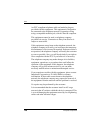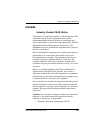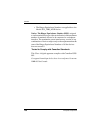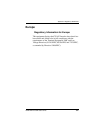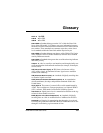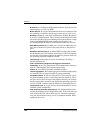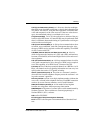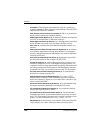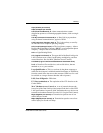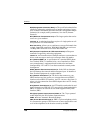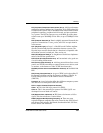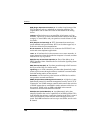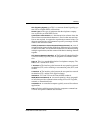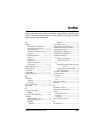
Glossary
136 Interphase Corporation
EuroISDN ◆ The European implementation of Q.931, providing a
common standard for ISDN signalling within Europe. Issued by ETSI
under the ETS 300 series standards.
FCC (Federal Communication Commission) ◆ The U.S. government
agency which regulates the telephone industry.
HDB3 (High Density Bipolar 3) ◆ A method of digitally encoding data
on a link. A modified form of AMI used in Europe.
HDLC (High-level Data Link Control) ◆ A framing protocol specified
by the ISO that can provide error-free Data Link layer services.
host name ◆ A unique name that identifies each host machine on a
network.
IEEE (Institute of Electrical and Electronic Engineers) ◆ An informa-
tion exchange organization. Among other functions, it coordinates,
develops, and publishes network standards for use in the United States,
following ANSI rules.
IETF (Internet Engineering Task Force) ◆ Organization responsible
for all Internet protocols (for example, IP, TCP, FTP).
IP (Internet Protocol) ◆ A networking protocol for providing a con-
nectionless (datagram) service to the higher transport protocol. It is
responsible for discovering and maintaining topology information and
for routing packets across homogeneous or heterogeneous networks.
Combined with TCP, it is commonly known as the TCP/IP platform.
IPX (Internetwork Packet eXchange Protocol) ◆ A connectionless
Network layer protocol similar to IP.
ISDN (Integrated Services Digital Network) ◆ An early, CCITT-
adopted protocol reference model intended to provide a ubiquitous,
end-to-end, interactive digital service for data, audio, and video. Syn-
onym: narrowband ISDN.
ISO (International Standards Organization) ◆ An international body
that creates networking standards, including the OSI model.
ITC (Independent Telephone Company) ◆ Any telephone company
that was not originally part of AT&T.
ITU (International Telecommunication Union) ◆ The international
standards organization for telecommunications, previously known as
the CCITT (International Telephone and Telegraph Consultative Com-
mittee). For more information, see http://www.itu.ch
KB (Kilobytes) ◆ One kilobyte is equivalent to 1024 bytes when refer-
ring to memory size, and to 1000 bytes when referring to speed.



